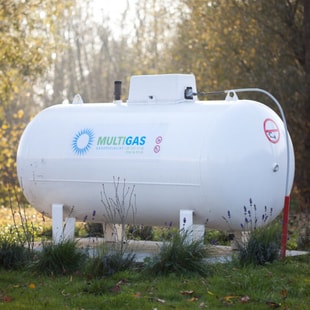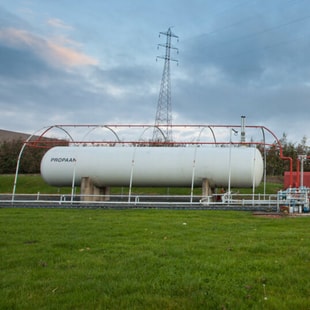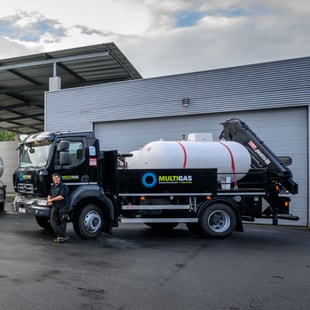How does a smart gas tank work?
Published on 12/06/2020 in Customer talks
A sensor monitors the available volume of gas in a gas tank. Thanks to an IoT solution, the distributor can see which gas tanks they need to refill – and how urgent this is.

The hospitality industry has recently opened back up and the availability of energy is back on the agenda. The operators of restaurants, cafés, French fry stands, and campsites not only rely on electricity, but also on gas. Is there still enough gas in the tank to leave the grill or gas stove on all evening? “We have to fill those tanks regularly,” says Ingeborg Symons, managing director of Multigas.
“Until recently, it was the customer’s job to monitor the filling level of the tank.” If the gas supply fell below a minimum threshold, the customer had to notify their distributor and schedule an appointment for a gas delivery. The owner no longer has to do that now. They do not have to call their supplier either. After all, smart gas tanks are available now.
What is a smart gas tank?
A smart gas tank contains a sensor. It measures the filling level of the tank – usually every six hours – and automatically transmits the measured value to Proximus’ Internet of Things platform. Thanks to the app, the gas supplier can see from a distance how the gas tank is doing. If the tank is set at 30%, the system will send a message to the distributor so that he can immediately schedule a delivery.



Luxury for the end customer
A smart gas tank comes with a major advantage. The customer no longer has to constantly manually check the gas tank meter to see how much gas is still available. “Thanks to the level monitoring, we can ensure that the customer always receives a new gas delivery on time,” says Ingeborg Symons. “The customer no longer needs to call us. They don’t have to monitor the filling level anymore and can still count on never running out of gas.”
Only advantages for the supplier
Because the distributor no longer receives hundreds of phone calls a day, the administration is easier. Moreover, the delivery of gas becomes more efficient. “Thanks to the level monitoring, we significantly reduce the number of unnecessary trips,” adds Ingeborg Symons. “If a customer is on vacation, we can immediately see that a new delivery isn’t necessary yet. Generally speaking, we can now lower the filling level of customers’ tanks in a safe way and then fill them optimally in one go. This allows us to carry out deliveries much more efficiently.”

Do you spend a lot of time planning and calculating how much fuel or fuids you need to deliver at a certain place and time? Deliver at the right time.
Discover the Smart TankDo you have any questions or would you like to launch an IoT project yourself? Then do not hesitate to contact one of our experts.
Contact usOne
One magazine is the Proximus B2B magazine for CIOs and IT professionals in large and medium-sized organisations.